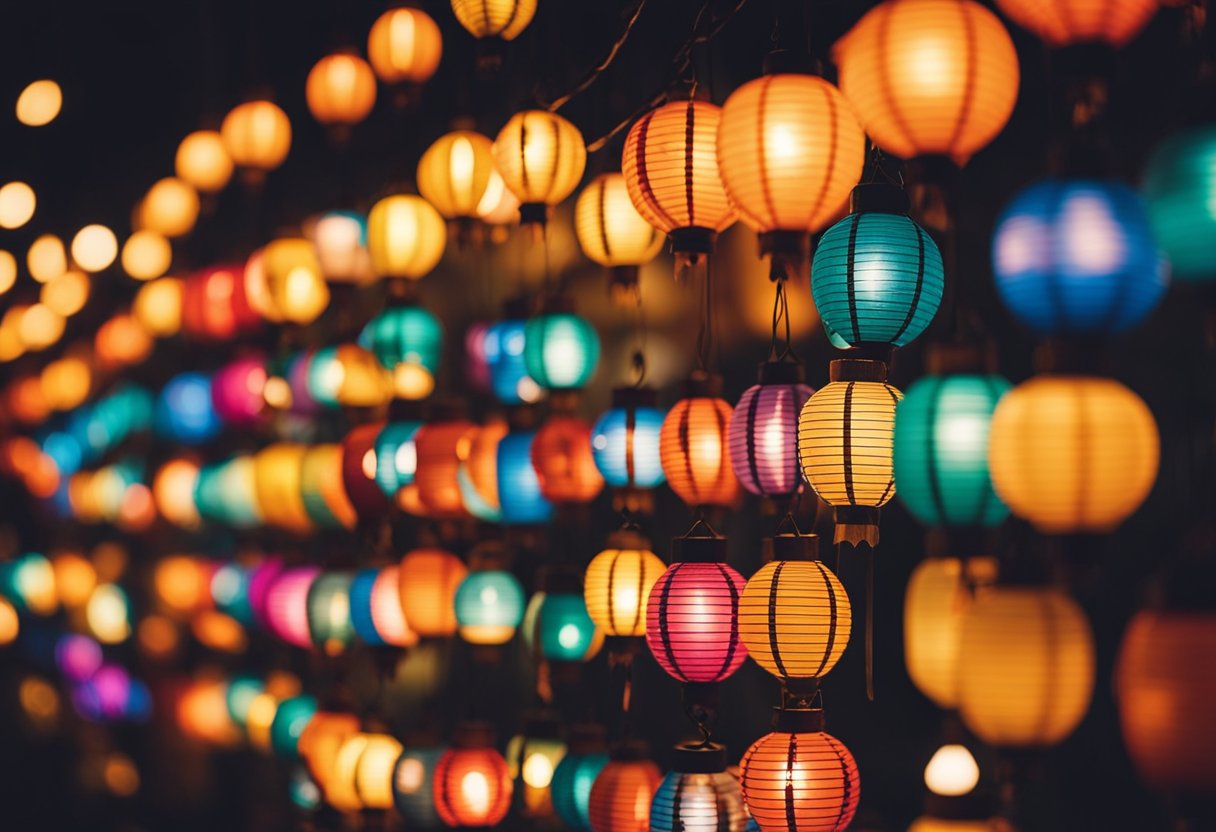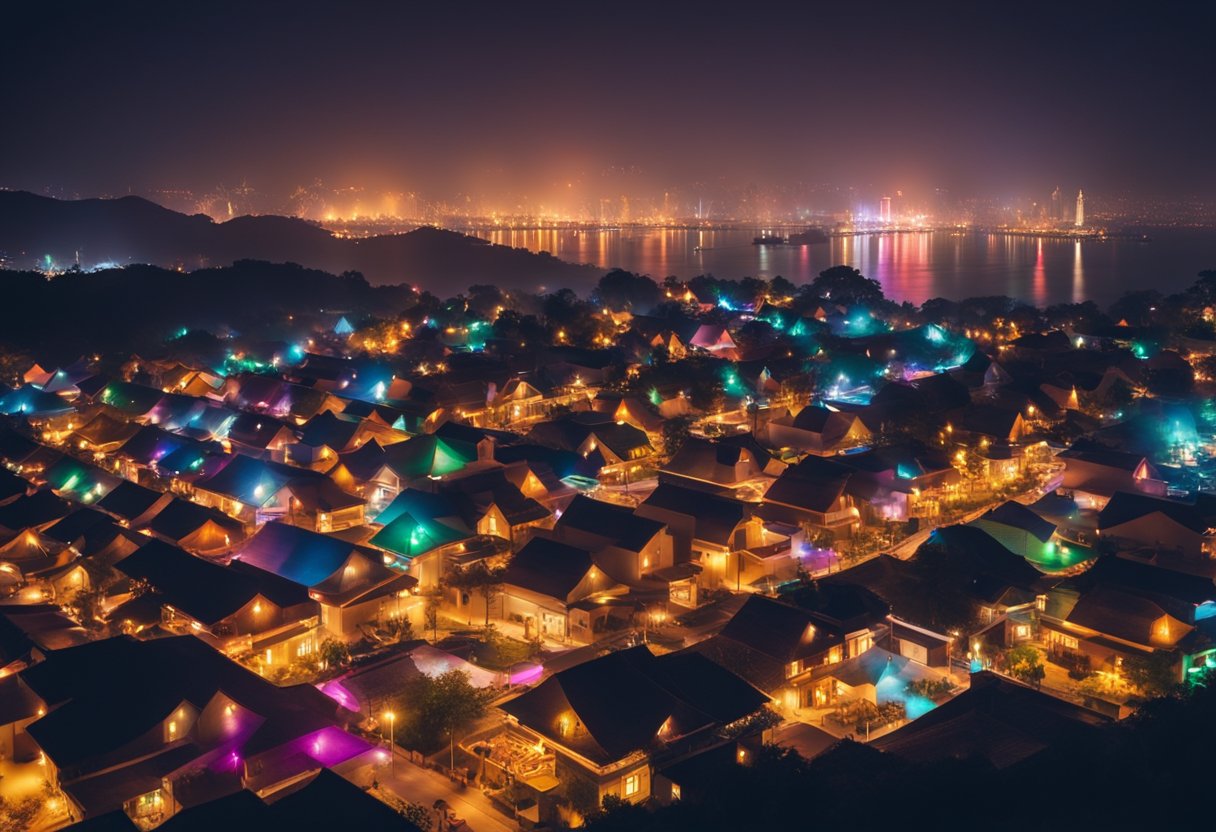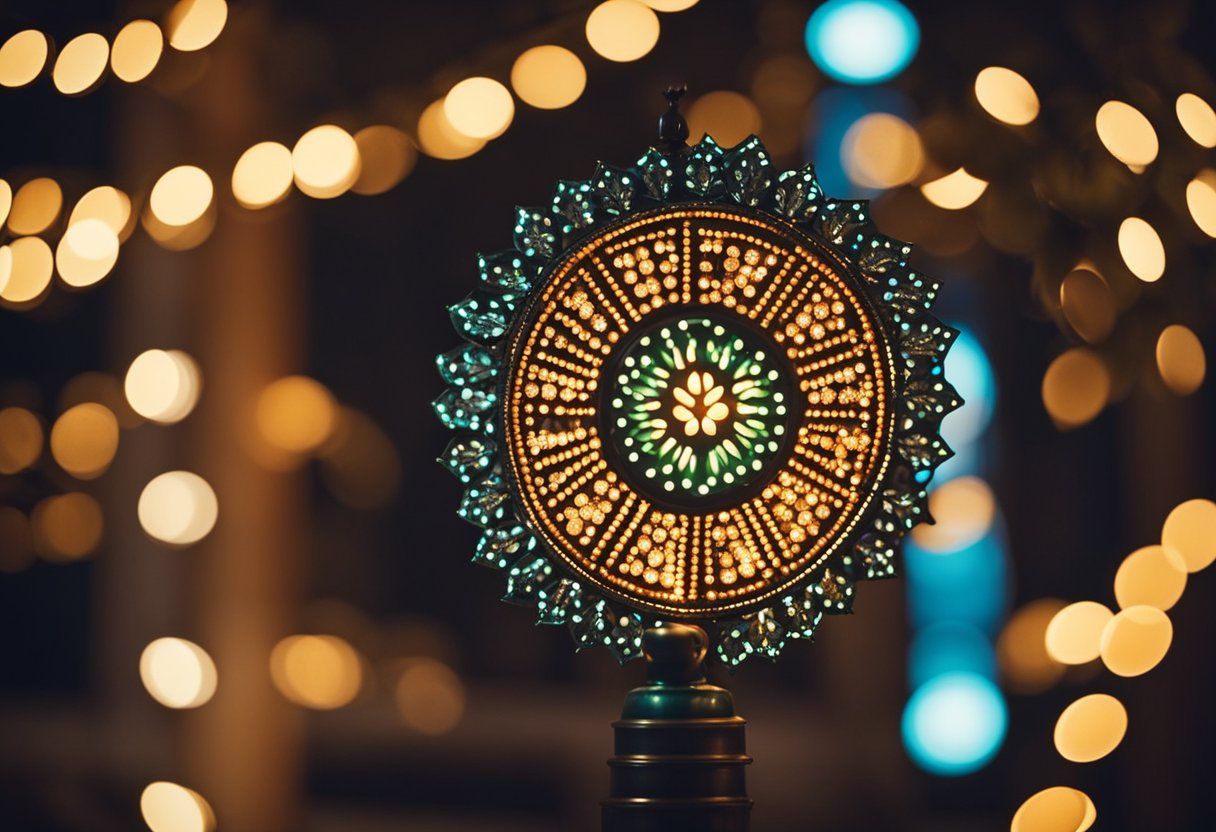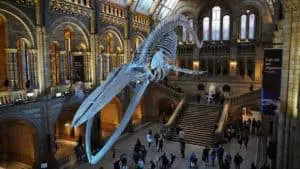Festivals of Light: Diwali, Hanukkah, and Beyond!

Updated On: April 13, 2024 by Esraa Mahmoud
Across cultures and continents, light has long symbolised hope, wisdom, and the triumph of good over darkness. Festivals of light, such as Diwali and Hanukkah, serve as poignant embodiments of this symbolism, each carrying rich historical significance and distinct cultural practices. In Diwali, traditionally celebrated by Hindus and other faiths across South Asia and the diaspora, we witness a vibrant tapestry of rituals that illuminate the spiritual “victory of light over darkness, good over evil, and knowledge over ignorance”. In contrast, Hanukkah, known as the Festival of Lights in Judaism, commemorates the rededication of the Second Temple in Jerusalem and is observed by lighting the menorah, a nine-branched candelabrum, over eight nights.
While these festivities have deep roots in their respective religious traditions, their influence and relevance extend far beyond their origins. Diwali’s glowing presence has spread globally, with people of various backgrounds participating in the festivities. Similarly, Hanukkah’s impact is felt worldwide, ingraining its symbols and traditions into the fabric of diverse societies. These festivals, along with others, bring communities together and prompt us to reflect on the environmental and social aspects of such celebrations. By examining these points of interconnectedness, we gain insights into how calendar systems vary and adapt to accommodate these timeless observances.
The Essence of Festivals of Light
Throughout various cultures and religions, light festivals symbolise the triumph of light over darkness, knowledge over ignorance, and hope over despair. Significantly, Diwali is recognised as a vibrant and jubilant festival. Celebrated by Hindus, Sikhs, Jains, and Buddhists, homes and public spaces are adorned with lamps, known as “diyas,” which cast away shadows and represent enlightenment.
The Jewish Hanukkah, also known as the Festival of Lights, shares similar symbolism, with the lighting of the menorah each night reflecting the miracle of the Temple’s oil lasting for eight days. In both Diwali and Hanukkah, lighting is central, signifying physical light, spiritual awakening, and the enduring resilience of faith.
Here is a brief overview:
- Diwali: The festival of lights that marks the victory of good over evil and is celebrated with fireworks, sweets, and decorations.
- Hanukkah: Observing the rededication of the Second Temple in Jerusalem, featuring foods fried in oil and games played with dreidels.
Globally, similar festivals exist among different cultures, each with unique customs but a shared underlying message of light’s hope-inspiring power. These festivals bring communities together, creating shared moments of joy and reflection. Through our collective celebrations, we find unity and a sense of belonging in the shared human experiences of hope, struggle, and the joyous acknowledgement of life’s triumphs.
Historical Significance of Diwali

Diwali, known as the Festival of Lights, holds a profound place in Hindu tradition and is celebrated with great enthusiasm across India and by Hindus worldwide. This auspicious festival symbolises the triumph of good over evil, marking the return of Lord Rama to Ayodhya after defeating the demon king Ravana.
Key Elements:
- Faith: Central to Hinduism, the celebration reinforces hope and spiritual values.
- Lunar Calendar: Occurs on the new moon day of Kartika, as per the Hindu lunar calendar.
Diwali festivities are characterised by the lighting of oil lamps (diyas) and elaborate rangolis, signifying the light that protects us from spiritual darkness. These lamps are not mere decorations but are a testament to the enduring faith that light will prevail even in the darkest of times.
Households and public spaces glow with the soft lights of thousands of diyas. The act of lighting these lamps is an embodiment of our resolve to commit to good deeds and thoughts, guiding us towards righteousness.
Historical Context:
- Victory: Diwali celebrates the winning of virtue over vice.
- Legend: Commemorates Lord Rama’s victory over Ravana and his coronation in Ayodhya.
Our stories and rituals during Diwali reiterate the essence of optimism — the core of this festival. While the historical significance of Diwali is entrenched in religious scriptures, it’s the universal message of Diwali that resonates with millions: light has the power to lead us from ignorance to wisdom and from despair to hope.
Cultural Practices and Rituals of Diwali
In our exploration of festivals of light, we turn our attention to Diwali, a celebration deeply rooted in Hinduism that symbolises the triumph of good over evil. Families across India and the world come together to partake in this radiant event.
Preparations and Decoration
During Diwali, homes are immaculately cleaned and adorned with rangolis—intricate designs made on the floor using coloured rice or powder. These vibrant creations invite blessings into households.
Lighting the Lamps
The signature feature of Diwali involves lighting diyas—small clay lamps filled with oil—symbolising the light that protects from spiritual darkness. These are not just decorative but also have a profound spiritual significance.
- Worship Practices
- Prayers and Offerings: Prayers are offered to deities, notably Lakshmi, the goddess of wealth, hoping to receive divine blessings for prosperity.
- Temple Visits: Many visit temples to seek spiritual enrichment and to participate in community celebrations.
Culinary Delights
- Sweets: Delectable sweets like laddoos, barfi, and jalebi are synonymous with Diwali. Sharing these treats with family and friends dispenses joy and sweetness.
Cultural Significance
This festival of lights transcends religious boundaries, fostering unity and joy. It is a time when we put aside differences, join with loved ones, and immerse ourselves in the glow of Diwali’s splendour.
Meaning and Observance of Hanukkah
Hanukkah, also known as the Jewish Festival of Lights, is an eight-day celebration that holds great significance in the Jewish faith. It commemorates the victory and miracle of the oil that took place in Jerusalem more than two millennia ago. This festival begins on the 25th of Kislev on the Hebrew calendar and symbolises the rededication of the Second Temple in Jerusalem.
Each evening during Hanukkah, a candle is lit on the menorah, a nine-branched candelabrum. The candles are lit with the help of the shamash (helper candle), which is typically set apart from the other candles. The lighting progresses each night until all eight candles, excluding the shamash, are kindled on the final evening.
The observance of Hanukkah includes:
- Lighting the menorah: One candle for each of the eight nights.
- Reciting blessings: Over the candles, each night.
- Singing hymns: Such as “Ma’oz Tzur” (Rock of Ages).
- Playing with the Dreidel: A game that involves a spinning top reminds us of the Hebrew term for Hanukkah, dedication.
Above all, Hanukkah serves as a time to gather with family and friends, reflecting on themes of freedom, the miracles of the Jewish people, and the enduring light within the Jewish faith. Traditional foods, often fried in oil, like potato latkes and sufganiyot (jelly doughnuts), are enjoyed, adding to the festive atmosphere and harkening back to the miracle of the oil that burned for eight days and nights.
Hanukkah offers a moment of celebration and reflection as our homes are illuminated with the gentle glow of the menorah candles, and our shared heritage is celebrated across our communities.
Hanukkah Traditions and Symbols

Hanukkah, also known as the Festival of Lights, is a significant Jewish celebration that honours the rededication of the Second Temple in Jerusalem. It is observed for eight nights and days, with numerous customs and symbols central to its practice.
The Menorah (Hanukkiah): A paramount symbol of Hanukkah, the menorah is a nine-branched candelabrum. We light one candle each evening until all eight candles are lit by the eighth night. The ninth candle, called the ‘shamash,’ serves as the helper candle to light the others.
Dreidel: A four-sided spinning top, each side marked with Hebrew letters, the dreidel is both a reminder of the Jewish struggle for freedom and a popular game played during the festival.
Candles: Symbolising the miracle of the oil that burned for eight days, candles are central to Hanukkah. Each night, a new candle is added to the menorah, signifying the increasing miracle.
| Nights & Lights | Symbol |
|---|---|
| First Night | 1 candle + shamash |
| Second Night | 2 candles + shamash |
| Third Night | … |
| Eighth Night | 8 candles + shamash |
Foods: We indulge in foods fried in oil, such as sufganiyot (jam-filled doughnuts) and latkes (potato pancakes), commemorating the oil that miraculously lasted in the ancient temple.
Songs and Gifts: Our celebrations often include the singing of traditional Hanukkah songs and the giving of gifts to friends and family. Music fills our homes, and small presents are exchanged, fostering a festive atmosphere.
Hanukkah is more than a festival; it is a chance for us to remember our history, celebrate freedom, and enjoy the warmth of our traditions.
Festivals of Light in Other Cultures

Across the world, numerous cultures celebrate their own festivals of light. For Buddhist communities, one of the most significant is Bodhi Day, marking the enlightenment of Siddhartha Gautama, who became the Buddha. During this time, lanterns illuminate temples and homes to symbolise enlightenment.
Sikhs commemorate Bandi Chhor Divas with the Golden Temple in Amritsar spectacularly lit up. It coincides with Diwali and marks the release of Guru Hargobind from imprisonment. Jains, on the other hand, observe Mahavir Jayanti, celebrating the birth of Lord Mahavir with grand processions and ceremonial lamps.
Celebrations such as Lunar New Year, observed by various East Asian communities, also feature lights prominently. Lantern festivals brighten up the night, enlivening streets with vibrant displays to usher in good fortune.
Kwanzaa, although not a festival of light in the traditional sense, emphasises unity among African-American communities through seven principles, one of which is symbolised each day by lighting a candle in the Kinara.
For Muslims, the Milad un Nabi marks the birth of the Prophet Muhammad. In some traditions, homes and mosques glow with decorative lights to honour this occasion.
Each of these festivals, regardless of geographical location, reflects a global spirit of community and celebration. The illumination from their respective traditions serves as a metaphor for dispelling darkness and highlighting the universal quest for light that spans different creeds and cultures.
Symbolism of Light in Religious Celebrations
In numerous religious festivities, light serves as a pivotal emblem. It frequently represents hope, faith, and the victory of good over evil. Celebrations like Diwali, known as the Festival of Lights, encapsulate this idea by using light to symbolise knowledge dispelling ignorance and illuminating the path to prosperity and happiness.
- Diwali: Clay lamps called diyas are lit to invite the goddess Lakshmi into homes, signifying light’s power to banish darkness.
- Hanukkah: Also known as the Festival of Lights, features the lighting of the menorah, harking back to the miracle of the temple lamp oil lasting eight days.
At its core, the use of light in these celebrations underlines a communal aspiration for enlightenment and renewal. It serves not only as a physical presence but also an internal beacon, guiding adherents towards transcendence over life’s darker aspects.
| Light in Festivals | Significance |
|---|---|
| Diyas in Diwali | Triumph over darkness, prosperity, purity |
| Menorah in Hanukkah | Miracle, nedivas lev, or willing-heartedness |
In each tradition, the kindling of lights is more than a ritual; it’s a universal language speaking of miracles, the triumph of light over darkness, and an unyielding hope for the future. Whether it’s through the flicker of a candle or the glow of a lantern, each flame tells a story, binding us in our collective search for spiritual and moral clarity.
Diwali and Its Global Influence
Diwali, the eminent Festival of Lights, has long been a cornerstone of Indian culture. As a celebration that epitomises the triumph of light over darkness and good over evil, it has transcended its geographical origins to cast a warm glow on a global stage.
Traditionally, Diwali signifies the return of Lord Rama to Ayodhya after defeating the demon king Ravana. In honour of this, millions across India illuminate their homes with diyas, create vibrant rangoli artworks, and engage in prayers and merriment. However, the community aspect of Diwali has enabled it to spread far and wide, resonating with a universal appeal. Our world, diverse, cherishes lights as symbols of hope and renewal.
Through the vast Indian diaspora, Diwali has woven itself into the cultural tapestry of numerous countries. From public fireworks displays to temples adorned with lights, it’s a spectacle that unites people of various backgrounds. This festival now sees non-Hindu communities also partaking in its joyful rituals, demonstrating cultural inclusivity’s power.
Internationally, Diwali has encouraged kinship within community groups, promoting values of peace and togetherness. Cities like London, New York, and Melbourne host large-scale events, showcasing the festival and a piece of India’s soul. This global expansion has positioned Diwali as a conduit for intercultural dialogue and understanding.
In essence, Diwali’s influence extends beyond its religious underpinnings to foster a sense of global community. It’s a testament to humanity’s shared affinity for light as a symbol of life and prosperity, making Diwali not just an Indian festival but a worldwide celebration of unity.
Hanukkah’s Impact and Relevance Worldwide

Hanukkah, the Jewish Festival of Lights, gracefully illuminates the role of Judaism on a global scale. Celebrated by Jewish communities worldwide, this ancient festival has a profound impact that extends far beyond Israel, the heartland of the Jewish faith.
- Historical Significance: Hanukkah commemorates the Maccabean Revolt and rededication of the Second Temple in Jerusalem. It is a potent symbol of resilience and the struggle for religious freedom.
- Cultural Influence: Across the diaspora, Jewish communities unite to light the menorah for eight nights, inviting neighbourly curiosity and fostering a sense of shared humanity.
- Global Celebrations: The menorah’s radiance can be seen from bustling city squares in New York and London to quaint neighbourhoods in far-flung destinations, underscoring the festival’s far-reaching appeal.
We observe a growing interest in Hanukkah’s traditions, including the story of the oil miracle, which resonates with universal themes of hope and perseverance. This is evident in the comparisons often drawn between Hanukkah and other Festivals of Light, such as Diwali and Kwanzaa, signifying a bridge between disparate cultures through the symbolism of light prevailing over darkness.
It’s not only within the confines of religion that Hanukkah holds relevance. The festival has seen a burgeoning presence in popular culture, educational curriculums, and even in tourism, as travellers often seek to experience the festivities first-hand, adding to their understanding of Judaism and its celebrations.
Hanukkah’s impact is also noted in its push for societal virtues such as charity and tikkun olam (repairing the world), encouraging acts of kindness that contribute positively to global communities. Through sharing its light, Hanukkah gracefully invites a rich cultural exchange and engenders an ever-expansive embrace of diversity.
The Interplay of Calendar Systems in Light Festivals

Light festivals are deeply intertwined with the calendar systems they follow. These systems not only dictate the timing of the festivals but also infuse them with cultural significance.
To begin with, Diwali, referred to in Sanskrit as Deepavali, which means “row of lamps,” is celebrated according to the Hindu lunar calendar. It typically occurs in the month of Kartik, marking the new moon when the nights are at their darkest. This celebration accentuates the Hindu philosophy of light prevailing over darkness.
On the other hand, Hanukkah is observed based on the Hebrew calendar. Falling typically in the month of Kislev, it’s when days grow short and nights lengthen in the Gregorian calendar. This eight-day Festival of Lights, therefore, brings brightness to the increasing winter gloom.
Here’s a brief comparison of how these calendars influence festival timings:
- Diwali: Falls between the end of October and the start of November.
- Hanukkah: This can occur from late November to late December.
These festivals illuminate how calendar systems are more than just a way to organise dates. They are part of a broader cultural narrative, reflecting and shaping the traditions that utilise them. Hanukkah and Diwali, through their respective calendar frameworks, encapsulate a universal human inclination to find hope in luminosity during the year’s darkest periods.
Through our continual celebration, we embrace the myriad of calendar systems that bring us together in a shared human experience, each with unique patterns in our collective journey around the sun.
Environmental and Social Aspects of Light Festivals
When we consider the environmental impact of light festivals, the use of fireworks and lamps can contribute to a noticeable increase in pollution. Fireworks, while integral to celebrations like Diwali, release particulate matter into the atmosphere, which can lead to air quality issues. We must also acknowledge the residue from fireworks that contaminates water and soil.
- Air Pollution: A significant spike during festivals.
- Water Pollution: Debris from fireworks and ritualistic offerings in rivers and lakes.
- Noise Pollution: Increases due to fireworks.
- Fire risks: Increased due to fireworks and lamps.
However, the community spirit of these festivals often leads to a collective push for environmental awareness. Educational campaigns are sometimes launched during these times to encourage the use of eco-friendly celebration tools. By fostering community involvement, light festivals serve as a platform for promoting both social cohesion and environmental consciousness.
In terms of social impact, light festivals like Diwali and Hanukkah bring people together, fostering a sense of community and shared heritage. These celebrations transcend the mere act of lighting lamps or setting off fireworks; they are a time when educational stories of good over evil are passed down through generations. Community events around these festivals often aim to inculcate values of togetherness and charity.
- Community Bonding: Strengthening ties across different age groups and cultures.
- Cultural Education: Transmitting stories and traditions that educate and inform.
- Charity and Benevolence: Encouraged as a part of the celebration.
We believe in celebrating responsibly to mitigate environmental impacts while enhancing the social benefits. By considering our festivities’ effects on our planet, we can ensure that these traditions continue to foster community spirit and education without sacrificing our environmental responsibilities.
Frequently Asked Questions

In this section, we explore common inquiries about the rich traditions and historical roots of festivals of light, specifically Diwali and Hanukkah. We also look at the various ways cultures worldwide celebrate these occasions and the universal symbols these festivals share.
What traditions are associated with Diwali celebrations?
Diwali, known as the festival of lights, is marked by several traditions, including the lighting of diyas or lamps, symbolising the victory of light over darkness. Homes are decorated, fireworks are set off, and families gather to share sweets and exchange gifts, honouring Lakshmi, the goddess of prosperity.
How do Jewish communities traditionally observe Hanukkah?
Hanukkah is observed by lighting the menorah, a nine-branched candelabrum, over eight nights. One candle is lit each evening, accompanied by special prayers and songs. Families enjoy traditional foods like latkes and sufganiyot, play the dreidel game, and give small gifts or gelt (money).
What are the historical origins of Diwali?
The origins of Diwali are rooted in ancient Hindu texts. They primarily celebrate Lord Rama’s return to his kingdom after 14 years in exile, as recounted in the epic Ramayana. This auspicious event symbolises the triumph of good over evil and light over darkness.
What significant events are commemorated during Hanukkah?
Hanukkah commemorates the rededication of the Second Temple in Jerusalem following the Maccabean Revolt against the Seleucid Empire. The central miracle associated with Hanukkah is the oil that, despite being enough for just one day, miraculously lasted eight days, allowing the menorah in the temple to remain lit.
In what ways do various cultures around the world celebrate their festivals of light?
Festivals of light around the world are celebrated in diverse ways. For instance, Thailand’s Yi Peng and Loy Krathong are involved in releasing lanterns into the sky and floating krathongs on water, respectively. In Sweden, Saint Lucia’s Day is marked by a candlelit procession and the wearing of wreaths featuring candles.
What are the common themes or symbols shared by light festivals in different religions?
Regardless of religious background, light festivals often share themes such as hope, renewal, and the struggle between light and darkness. Common symbols include the use of light itself, which can represent knowledge, enlightenment, and the spirit’s triumph over despair. These universal motifs foster a sense of unity and shared human experience.






